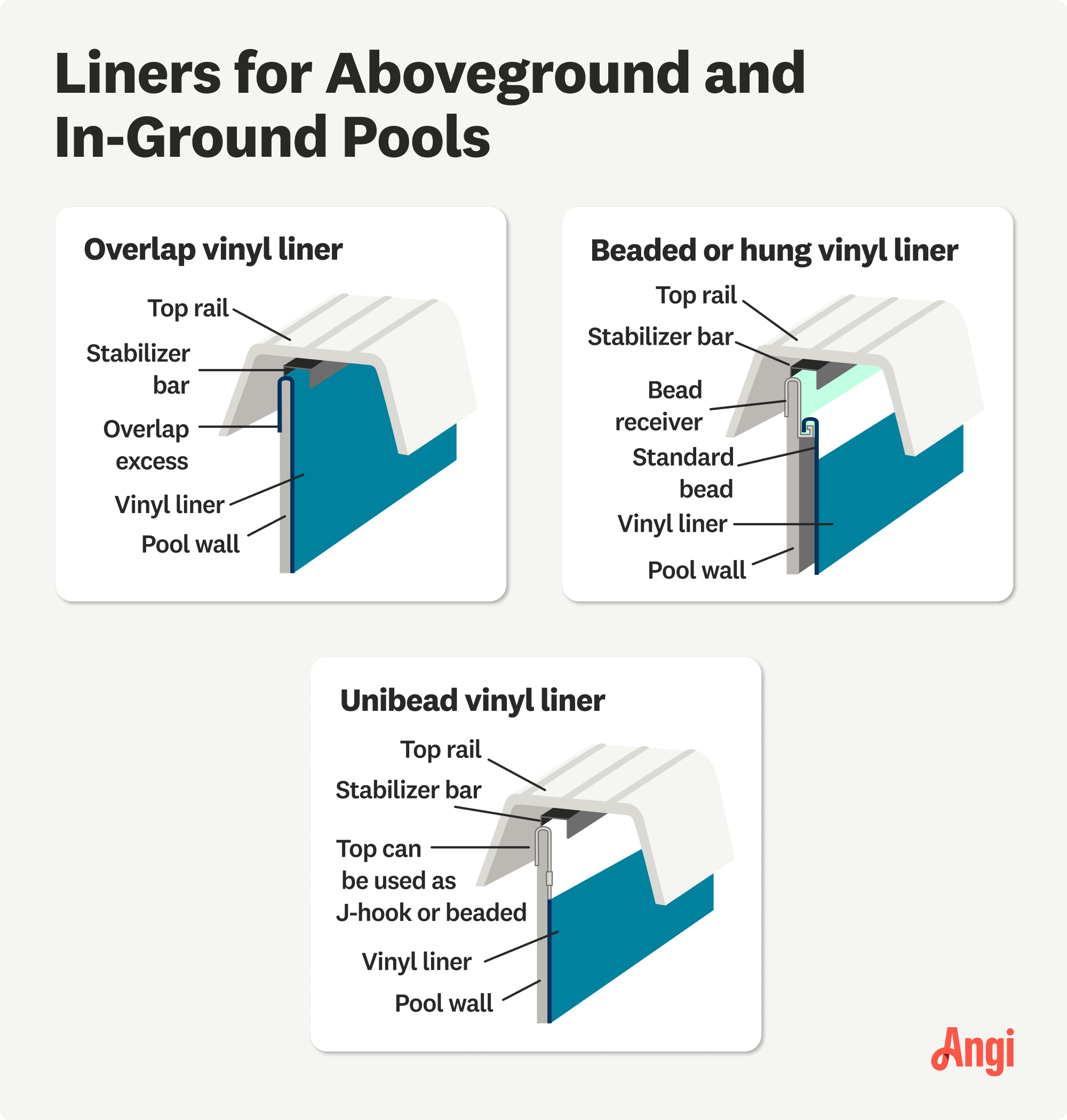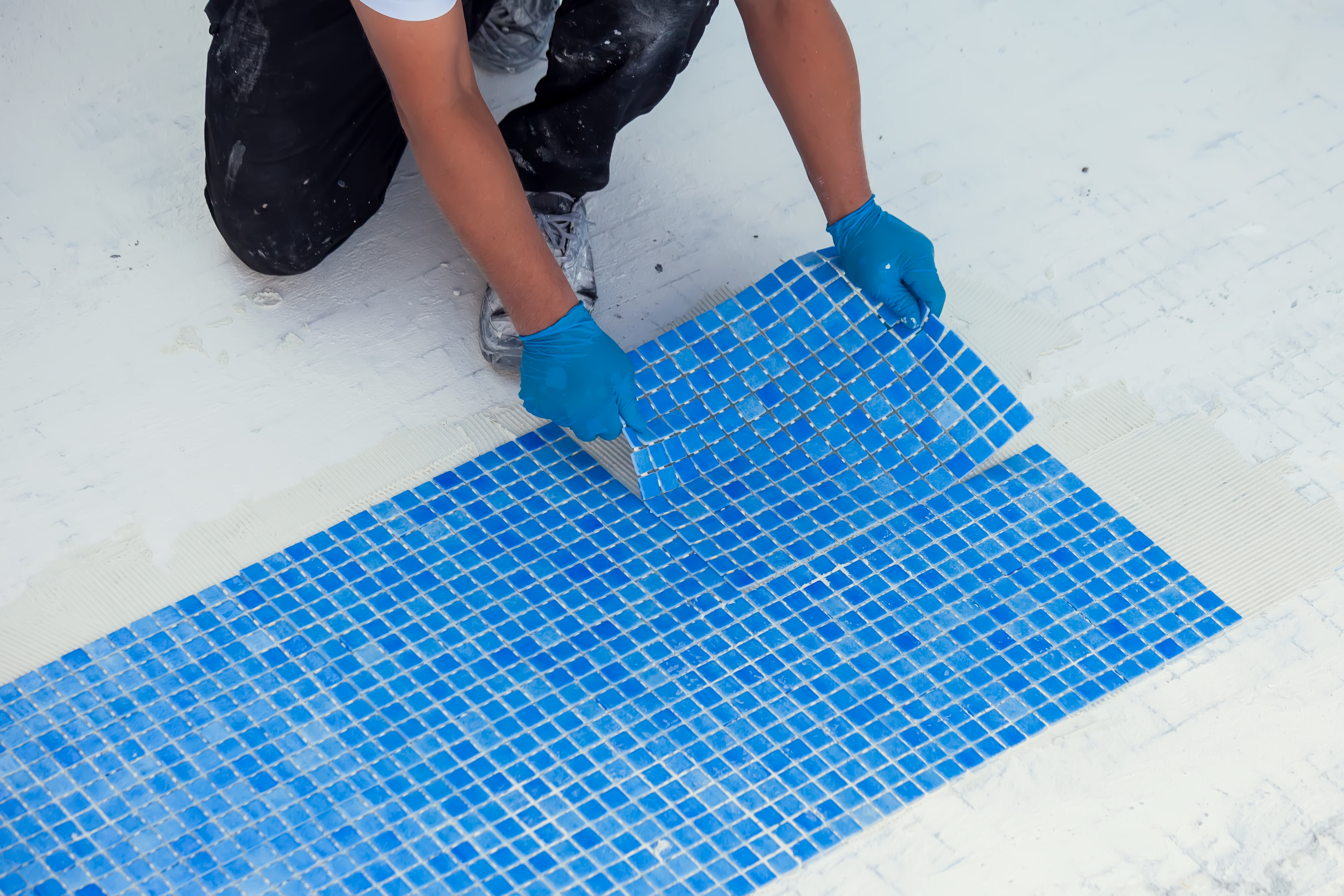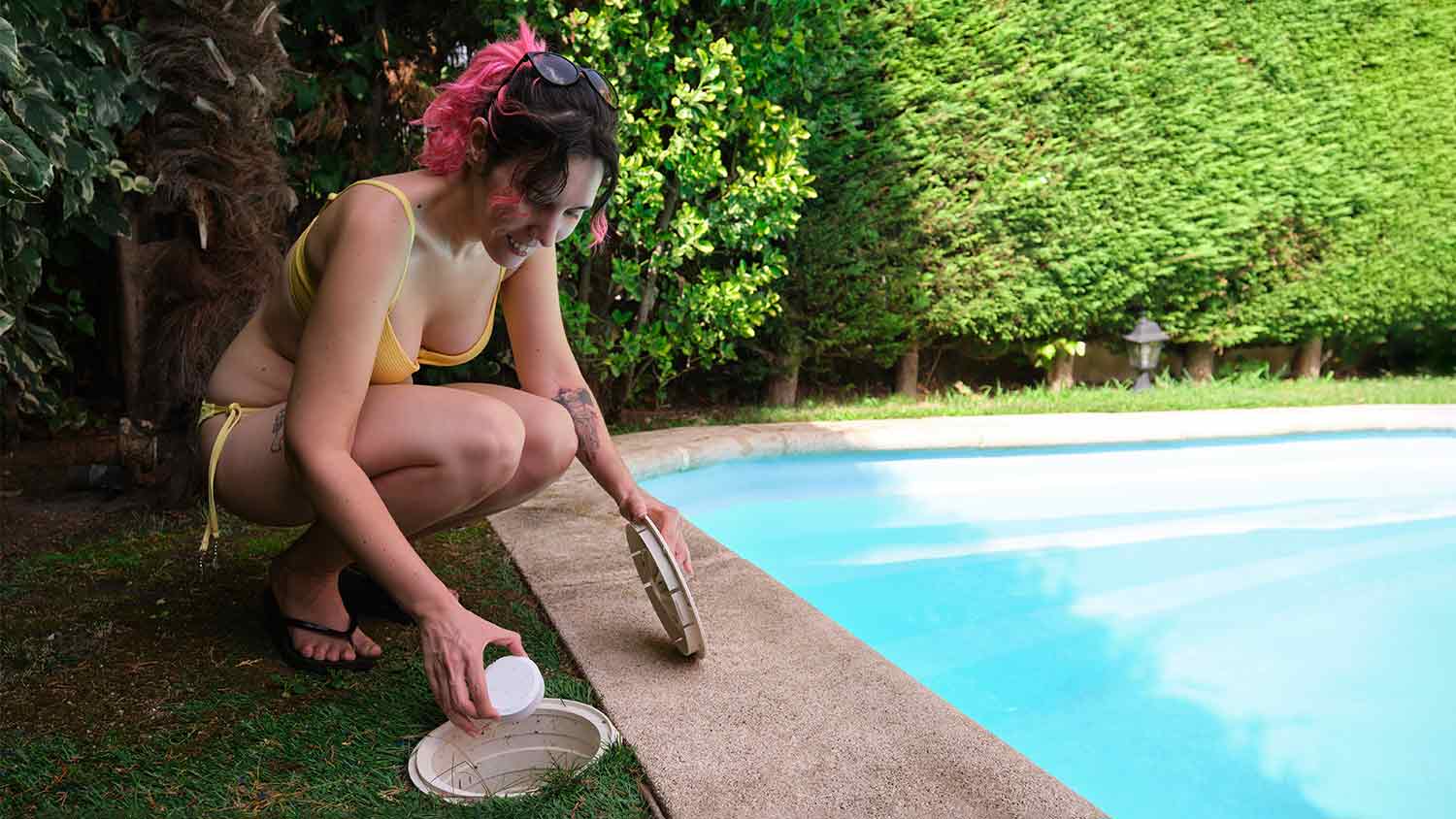
If you’ve been considering installing a new pool in the Buckeye State, this guide will help you understand inground pool costs in Columbus.
Pool construction and installation costs depend on your project and location. Check with a local pro for your specific job.
Pool liner replacement costs in Philadelphia are below the national average and depend on your pool size and liner type.
Philadelphia homeowners with pools should plan to get liner replacements done between April and October.
Since homes with pools sell for more in Pennsylvania, it's beneficial to stay on top of your pool liner replacement schedule.
Skip the DIY on this labor-intensive job and hand it off to a pro for a long-lasting installation.
The cost to replace a pool liner in Philadelphia is lower than the national average, ranging between $899 and $2,785, with most homeowners paying $1,796. Compared to other areas, you’ll have a longer window of time to schedule your pool liner replacement during ideal weather conditions. Check out all of the factors that affect your total costs for the project, including pool size, liner type, and labor.
Some of the major cost factors that determine the final cost for a pool liner replacement in Philadelphia include pool size and liner type.
Pool sizes in Philadelphia range from smaller spa-like 6-by-8-foot pools to those measuring 20-by-40 feet or larger. Since larger pools require more materials and labor, they cost more to work on. The costs listed are national averages, so your actual costs could vary.
| Pool Size (Feet) | Average Cost of Pool Liner |
|---|---|
| 6x8 | $240 |
| 8x12 | $480 |
| 8x20 | $800 |
| 10x8 | $400 |
| 12x20 | $1,200 |
| 16x32 | $2,560 |
| 18x36 | $3,240 |
| 20x40 | $4,000 |
In addition to the pool size, the pool liner material will significantly impact the actual costs. Vinyl is the most affordable material, followed by fiberglass and tile.
| Liner Material | Average Replacement Cost |
|---|---|
| Vinyl | $300–$4,000 |
| Fiberglass | $1,000–$8,000 |
| Tile | $2,000–$70,000 |

The type of pool liner you choose also affects the costs, with liners designed for aboveground pools costing less than those for in-ground pools.
Overlap and uni-bead liners are common options for aboveground pools due to their ease of installation and cost-effectiveness. Overlap liners are clamped along the pool wall, while uni-bead liners have a J-hook that you install on the wall edges. You can also convert a uni-bead liner into a beaded liner by trimming the hook area. Beaded liners are commonly used on in-ground pools and attach to a track that’s mounted along the pool walls.
| Liner Type | Average Cost | Pros | Cons |
|---|---|---|---|
| Overlap liner | $200–$600 | Usable for any pool height DIY-friendly | Not visually appealing Few design options |
| Uni-bead liner | $400–$900 | Option of J-hook or beaded liner Simple installation | More costly than overlap liners Requires precise measurements |
| Beaded liner | $500–$1,000 | Clean look Straightforward installation using the tracks | Requires precise cutting Improper installation leads to corrosion |
Thicker vinyl liners cost $300 to $500 more than thinner options and are less likely to tear. However, make sure your liner is compatible with your pool before installing it. In most cases, the standard 20-mil vinyl is the best option because it’s durable yet malleable enough to fit into tight angles and corners. Thicker vinyl, like 28, 30, and 40 mil, may not fit as snugly in corners and angles, which can cause wrinkles and leaks.

The following are additional factors to keep in mind for your liner replacement project.
The labor costs for pool liner installation are $250 to $800 for aboveground pools and $1,000 to $2,500 for in-ground pools. This project takes one to three days to complete, so it’s advisable to hire a pool liner installer in Philadelphia, Pennsylvania, rather than attempt a DIY.
It’s ideal to install your new pool liner when the weather is dry. For vinyl liners, wait until it’s at least 70 degrees Fahrenheit. In Philadelphia, you start seeing this weather in early April, so that’s one of the earliest times of the year during which pool pros can get the job done. If you opt to wait until fall, you can get it done as late as October.
Planning ahead and getting on your pool liner installer’s schedule early has several benefits. You won’t have to scramble to find someone with an opening, and you can enjoy a slight cost break by avoiding the peak season.
If you wait until summer is in full swing, the labor and material costs are higher due to the increase in demand. Additionally, it could take several weeks before the job is finished, meaning you and your family could miss out on some much-anticipated pool time.
You’re likely to find the best deals from companies that primarily service Philadelphia, as costs for pool liner replacement in neighboring cities are higher than the national average. Consider shopping locally and get at least three quotes before committing to a contract.
Your pool liner replacement doesn’t require special city permitting. However, if your installer discovers structural damage to your pool and you need to make renovations, you’ll need to secure a building permit before beginning construction.
When calculating your total costs for a pool liner replacement, remember to account for the 8% sales tax.
A pool liner replacement indirectly helps with the value of your home because a new liner helps you keep a well-maintained pool. In Pennsylvania, homes sell for higher prices if they have pools. The average return on investment (ROI) for an in-ground pool is 5% and 56%, but most homeowners see 7% to 8%.
That said, you won’t see the full ROI if your pool is in poor condition. Replacing the pool liner as needed and performing pool maintenance as scheduled can impress potential buyers. When estimating the cost of building a pool, don’t forget to budget for ongoing maintenance and part replacements.
Home is the most important place on earth, which is why Angi has helped more than 150 million homeowners transform their houses into homes they adore. To help homeowners with their next project, Angi provides readers with the most accurate cost data and upholds strict editorial standards. We survey real Angi customers about their project costs to develop the pricing data you see, so you can make the best decisions for you and your home. We pair this data with research from reputable sources, including the U.S. Bureau of Labor Statistics, academic journals, market studies, and interviews with industry experts—all to ensure our prices reflect real-world projects.
Want to help us improve our cost data? Send us a recent project quote to [email protected]. Quotes and personal information will not be shared publicly.
From average costs to expert advice, get all the answers you need to get your job done.

If you’ve been considering installing a new pool in the Buckeye State, this guide will help you understand inground pool costs in Columbus.

A pool chiller will cool down your pool, making swimming refreshing even when it’s sweltering. This guide will help you outline your pool chiller costs.

Lap pools are a great option if you're more interested in exercising than hanging out on a floatie. Learn all about lap pool costs in this guide.

Our chlorine calculator helps you determine the exact amount of chlorine to add to your pool, based on its volume and your desired parts per million (ppm) level.

Not sure what type of pool would suit your yard best? Use this guide on the different styles and designs to maximize appeal and utility.

When a murky mess interrupts your morning laps, you need to know how to clear cloudy pool water fast. These top cloudy water fixes will keep you afloat.